Mysore/Mysuru: The first Indian Wildlife Conservation Conference and the exhibition being held at the Karnataka State Open University (KSOU) campus in the city to mark the completion of 50 years of Project Tiger initiative has turned into a place for exchanging ideas and networking between the conservationists.
It is also a place for the public, students and over 30 researchers and scientists to learn about how the actual conservation methods work on the ground, strategies and the results of a concerted effort. Researchers and scientists from across the country have arrived here to showcase their works.
The conference that began on Apr. 9 will conclude this evening and there are over 36 stalls on wildlife, conservation, equipment, biodiversity and related paraphernalia. Among the stalls that are attracting a large number of visitors is the stall that throws light on moths.
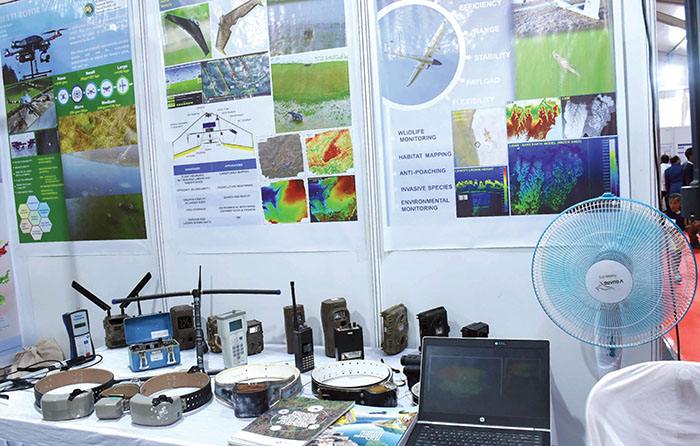
Stall on Himalayan region moths
Called ‘Spatial distribution of moths across Altitudinal Gradient, Goripaar, Munsyari, Kumaun Himalaya’, the stall speaks about the moths found in the Western Himalayan region. Moths belong to the order Lepidoptera of phylum Arthropoda and contrary to butterflies, moths usually remain ignored and unnoticed most of the time.
Despite anthropological pressure, moths have managed to diversify themselves, said Narendra Singh Lotani, who conducted research on moths along with Pradeep Kumar Sharma and Priya Bisht under the guidance of Prof. Chandra Singh Negi. The stall showcased four species of moths — Euphyia subangulata, Eustroma melancholica venipicta, Thitarodes balmiya and Peucetia acutativalva.
“Among the moths, Thitarodes balmiya is one of the most sought-after moths as the fungus developed on the caterpillar of this host moth is in great demand for its medicinal value. It was first used in traditional Tibetan medicine but is now highly prized by practitioners of traditional Chinese medicine.
“Moths are useful for ecological and conservation research though rarely do they gain greater prominence despite the enormous taxonomic and biological variety they display. Forest moth species have important functional roles as selective herbivores, pollinators and prey for other species,” he added.
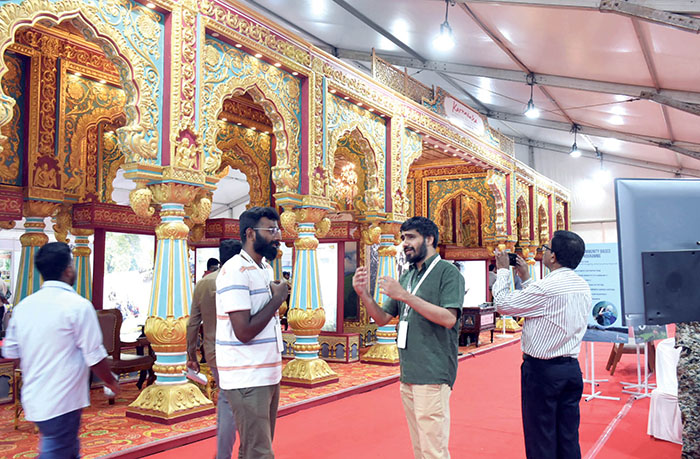
Drones and hi-tech equipment
The Dehradun-based Wildlife Institute of India (WII) has developed drones to monitor tigers in national parks and tiger reserves. Fitted with a GPS device and hi-resolution cameras, these unmanned aerial vehicles (UAVs) also known as drones, are fast becoming a necessity hi-tech tool in wildlife management all over the world.
Though the drones have been imported, the WII has assembled and customised them to suit the geographic and specific requirements of the tiger reserves. Among the drones displayed at the exhibition was the Trinity F90+, a fixed-wing eVTOL system that can fly for more than 90 minutes. It is an unbeaten drone in terms of performance and precision allowing the user to cover more area effortlessly with amazing results.
According to researchers, the Trinity F90+ combines the convenient handling of a copter with the efficient aerodynamics and endurance of a fixed-wing UAV. The result is a mapping drone that meets the highest demands on efficiency, and safety, delivering survey-grade accuracy and versatile application possibilities.
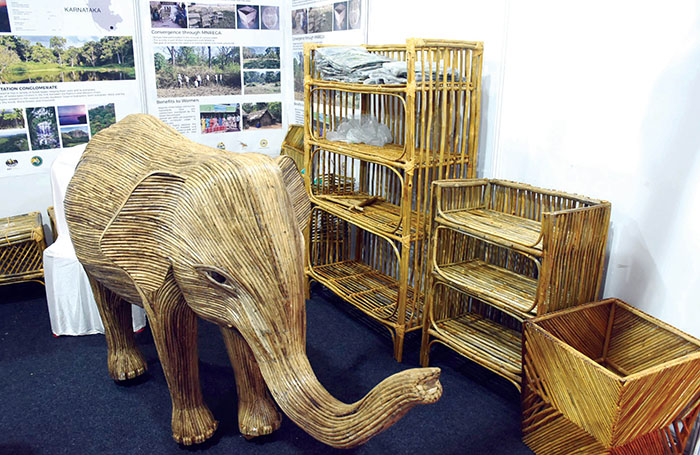
Night vision drones at Panna Reserve
Many of the drones have night-vision technology that will help monitor the movements of big cats round-the-clock. The drones have been put to use at Panna Tiger Reserve in Madhya Pradesh. WII officials said that a ‘drone squad’ has been constituted at Panna for the protection, monitoring and management of wildlife. The squad consists of a ‘DJ1 Phantom drone’ with sufficient batteries to operate for long hours, a dedicated vehicle and a drone operator with an assistant.
“The use of drones at Panna Reserve has been envisaged for law enforcement, monitoring, search and rescue of wildlife, wildfire fire-fighting and curbing human-animal conflict.
Future use of drones has been planned for ecotourism, monitoring invasive plant species, recreational and educational purposes and documentation of the biodiversity,” officials said.
The exhibition also disseminated information about the conservation steps taken to protect big cats, leopards, the Great Indian Bustard and other species at Bandipur and Nagarahole Tiger Reserves, Jim Corbett National Park and Satpura Tiger Reserve.
Exhibition venue designed like Palace Durbar Hall
As the conference is being held in Mysuru, the exhibition has been designed like the Durbar Hall of the Mysore Palace. Special attention has been given to the stalls that display the biodiversity of Karnataka and the efforts taken to conserve the flora and fauna that have resulted in the rising wildlife population.
As representatives have come from across India and some from the nations that have tiger populations, organisers have made special arrangements to showcase Karnataka as a wildlife tourism destination. Allied sectors like Mysore Silk, Sandalwood Soaps, oils and perfumes have been kept on display.
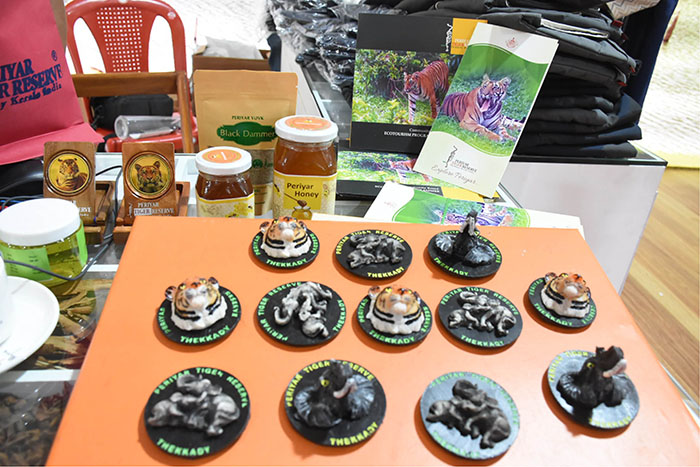
Crafting Lantana weed into wonder products
The initiative to make craft items and furniture from Lantana camara, an invasive weed, has helped improve the livelihoods of forest-dependent communities in Male Mahadeshwara Hills and Biligiri Ranganathaswamy Tiger Reserve.
Though the weed threatens to put the forest ecosystem at risk, it has become the primary source of livelihood for hundreds of Soliga tribals, especially women. The stalls on Lantana craft is a huge hit at the conference and the city residents are directly buying products from the tribals through marketing societies.
These artisans shape the plant into simple and elegant furniture pieces. Apart from its aesthetic appeal, the tag of being an eco-friendly alternative to wooden furniture has made Lantana products sought after in offices and homes.
From wardrobe to side tables, dining table set and key racks, art items, animal sculptures, teapoys, chairs, sitting round-topped chairs, waste baskets flower pots it’s lantana everywhere. The furniture comes with the label of being low-cost, durable, and resistant to termites and bedbugs.



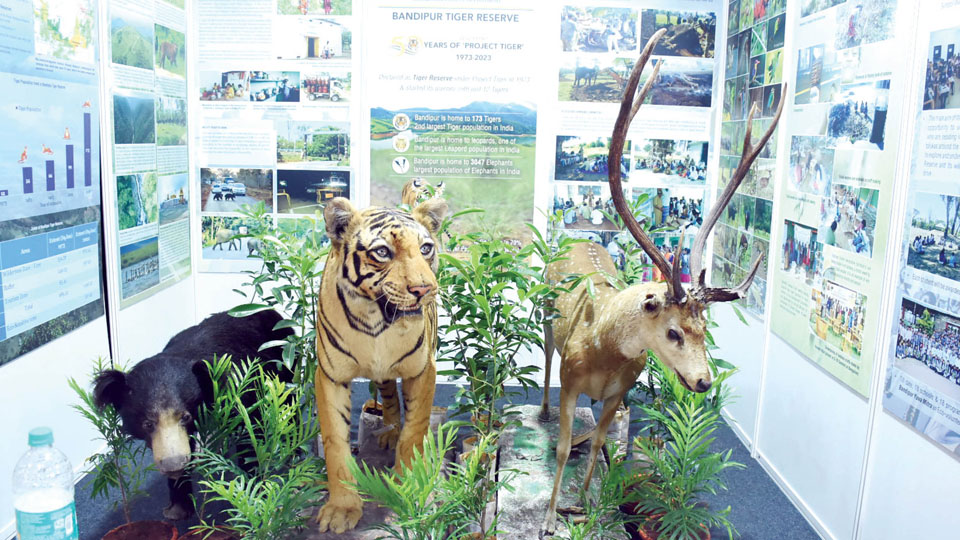


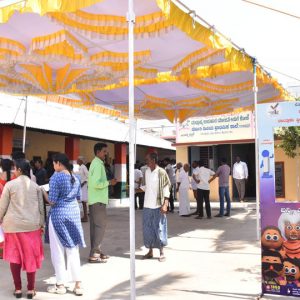

Recent Comments